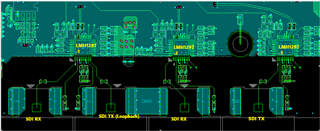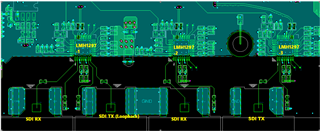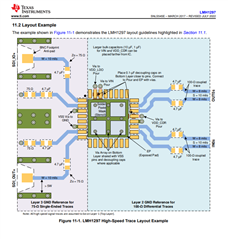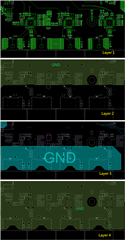Other Parts Discussed in Thread: LMH1229
Tool/software:
Hi,
I see this reply in E2E forums. In my application I use 3 pcs LMH1297 to implement 12G-SDI receiver and transceiver. But I meet long cable (50 meters) issue and it related to this description shown in below.
"Please note when SDI_OUT is enabled, we expect 10 to 15m of cable reach reduction. SDI-OUT causes cross talk and this reduces cable reach. "


LMH1297 Setting,
- Chip 1:SDI_IO is EQ mode. SDI_OUT: loop-through 75-Ω output port. (Rx + loop-through Tx)
- Chip 2: SDI_IO is EQ mode. SDI_OUT: unused. (Rx only)
- Chip 3: SDI_IO is CD mode. SDI_OUT: unused. (Tx only)
My issue is 12G-SDI Rx can't work normally when Tx is enable @ 50 meters long cable. All test results shown in below is tested in 50 meters long cable.
- Test 1-1: Chip 2 could receive 12G-SDI video normally when Tx of Chip 1 is "Disable"
- Test 1-2: Chip 2 can't receive 12G-SDI video (unlocked) when Tx of Chip 1 is "Enable"
- Test 2-1: Chip 2 could receive 12G-SDI video normally when Tx of Chip 3 is "Disable"
- Test 2-2: Chip 2 can't receive 12G-SDI video (unlocked) when Tx of Chip 3 is "Enable"
- Test 3-1: Chip 1 could receive 12G-SDI video normally when Tx of Chip 1 is "Disable"
- Test 3-2: Chip 2 can't receive 12G-SDI video (unlocked) when Tx of Chip 1 is "Enable"
It seems Tx has some influence to Rx channel, could you help to confirm this issue? Thanks.
1. when SDI_OUT is enabled, we expect 10 to 15m of cable reach reduction. <-- is correct?
2. If above description is correct, which distance is required between Tx and Rx if hope without cable reach reduction?
3. In my current layout (SDI connector position), any suggestion to reduce this issue impact? ex: add shielding..
Thanks.




